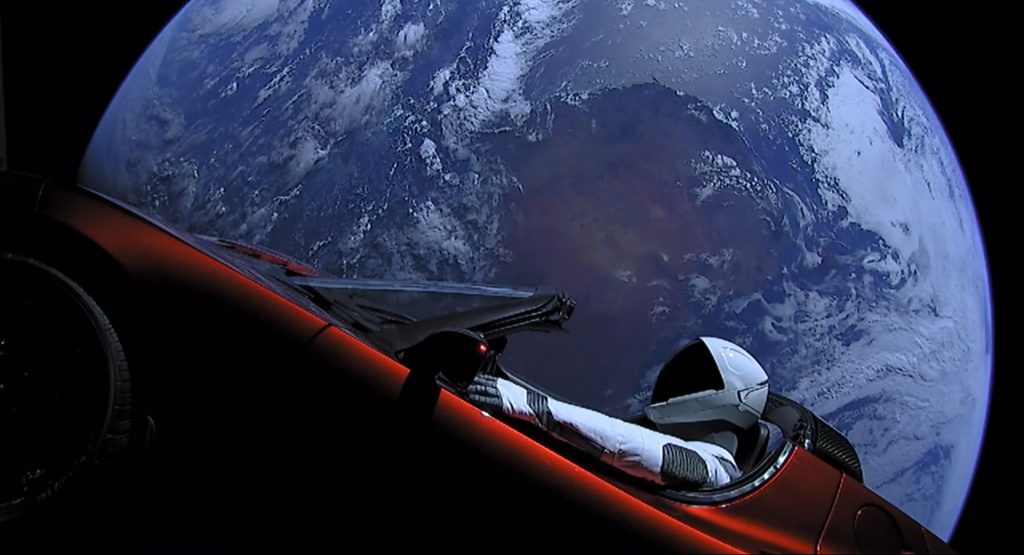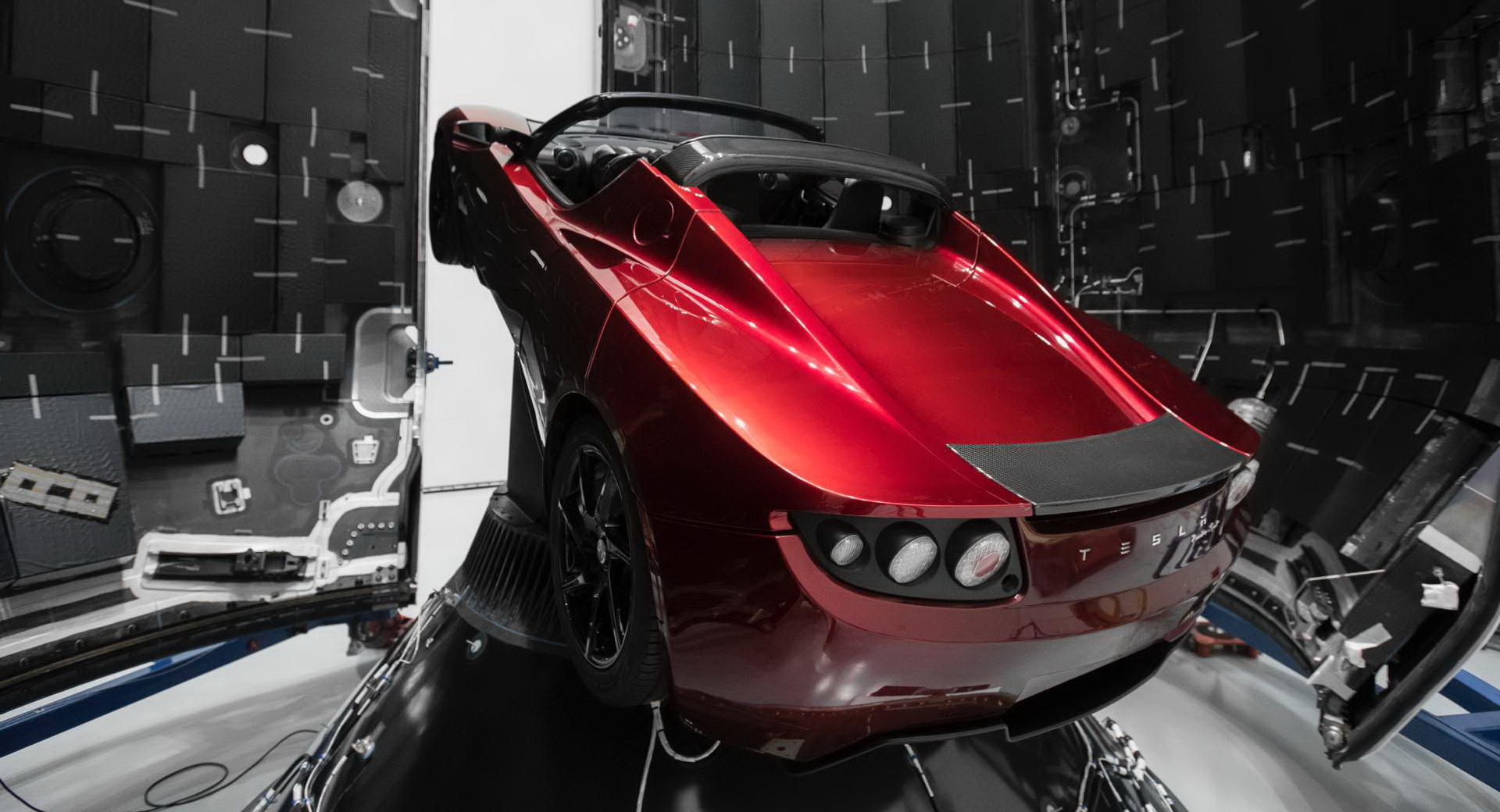It has been almost exactly four years since Elon Musk launched his Tesla Roadster into space on SpaceX’s Falcon Heavy rocket. It is now more than 234 million miles (377 million km) from Earth and is actually closer to Mars.
Shortly after the electric sports car was fired into space, the WhereisRoadster? website was launched to track its movements using NASA data. This site has revealed that the Roadster is moving away from Earth at 3,731 mph (6,005 km/h) while moving towards Mars at 17,370 mph (27,955 km/h). The Roadster is a touch under 200 million miles (320 million km) from Mars and has covered nearly 2 billion miles in space. It has also completed more than 2.62 orbits around the sun and has now traveled far enough to have driven all of the world’s roads 49.5 times.
Read Also: Tesla Removes Roadster’s Pricing Info From Website, Stops Taking Reservations For Founders Series
Speaking with CNN, astronomer at the Harvard Smithsonian Center for Astrophysics, Jonathan McDowell, said that the Tesla is probably still in one piece but may have been damaged by some meteor strikes.
Interestingly, astronomers haven’t observed the Roadster with their telescopes since March 2018, with professor of astrophysics at the University of Toronto, Hanno Rein, stating that there simply isn’t much scientific value in studying its trajectory. It is, after all, nothing more than an expensive piece of space junk.
The Tesla made a particularly close approach to Mars in 2020 and came within just 5 million miles (8 million km) of the red planet. It is not expected to get that closer to another planet until 2035 before making two passes within a few million miles of Earth in 2047 and 2050.
A paper published by Rein through Cornell University just a few days after the car was launched into space noted that there is a 22 per cent chance it could collide with the Earth within the next 15 million years.





